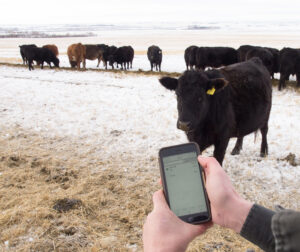Good Records Help Guide Efficient Production and Profitability Say Producers
Editor’s note: The following is the second in a two part series. See part one about the value of benchmarking and record keeping for all cattle operations.
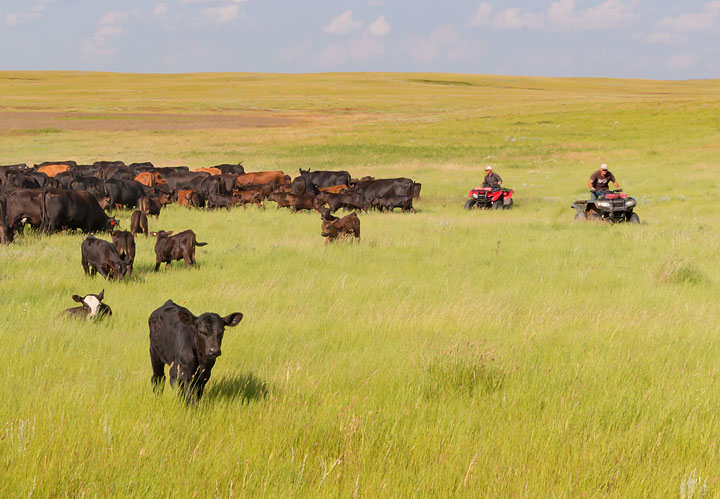
Keeping proper and useful beef herd production records is essential if you believe in the adage “you can’t manage what you don’t measure”. Records don’t have to be overly complicated, but do need to be thorough, say producers who rely on them for a lot of their management decisions.
Setting up a record keeping system properly will take a bit of time, but once the format is established keeping records current really isn’t that onerous — updating records is something that can even be done in front of the computer while having an early morning coffee, or taking a few minutes here and there during the month as new information comes along.
There are commercially-available record keeping software programs on the market, and some producers have developed their own customized Excel spreadsheets. These spreadsheets contain basic information on mature cattle identification (I.D.) numbers, calf I.D. numbers, calving dates, calf sex, information on when animals were processed and various health treatments, as well as weaning dates and weaning weights. And beyond that records can also include a wide range of other details — genetic information, breeding dates, livestock temperament, health issues, body condition scores, calving difficulties, as well as information on rates of gain and performance data in backgrounding operations. And of course they can also show details on marketing decisions.
What’s it all good for? For many producers production records become the foundation of their management decisions, without having to trust everything to memory.
When were these calves born?
What cows had calving difficulty?
When and what were cattle treated for?
With certain products, when are appropriate medication withdrawal times reached?
What were calf-weaning weights and which cows produced calves with highest or lowest weaning averages?
Who are among the bottom performers that should be culled?
How did calves perform in the backgrounding operation?
Which group and when are calves ready to market?
These are just some of the questions producers say production records can help them answer.
The next level
And when you’re ready, numbers can drill down even further say marketing specialists like Brenna Grant with Canfax Research Services. “It is important to know production information, but it’s also important to know how the economics stack up,” she says. “Detailed records that include knowing your cost of production are also important to leading beef producers.”
Marketing is not just about selling cattle, she says. It’s about knowing exactly what it costs to produce an animal, and then knowing the market well enough to determine the best time to sell — what price is your break even or what price provides a reasonable profit.
Grant says detailed records can help producers as they develop a marketing plan. Knowing their cost of production — what does it cost to produce an animal, or even more specifically what are your production costs for every 100 pounds of calf weaned — is an important number.
The marketing plan should also include a good inventory of the “product” you have — the quality, attributes and performance history of cattle. The plan should also factor in the farm’s cash flow needs.
With that information combined with market information, producers can set targets for survival prices, acceptable prices and favourable prices providing more confidence in when to sell. And keeping records can also be useful in economic (profitability?) benchmarking, allowing you to see how your operation compares nationally or regionally.
Canfax has developed some excellent fact sheets that explain in more detail the value of records. Visit their website and search reports like: Marketing Calves & Culls; and Production & Management Practices that Drive Profitability.
Start with a solid foundation of records and build from there. Prairie producers collect herd production records at different levels of detail, for a variety of herd management and marketing reasons.
KARMEN MCNABB
EASTEND, SK
Data collected on Karmen McNabb’s Excel spread sheets give’s their southwest Saskatchewan farm a pretty good handle on overall beef herd performance.
On a season-to-season basis it will point out the better and poorer performers in their Red Angus/Beef Booster cross commercial beef herd, as well as help in grouping backgrounded calves for market. And in the more than 20 years she’s been keeping records, the information can also be used for tracking any trends in production —pointing toward any changes needed in production and management practices.
“To be honest I don’t know if the longer term information has ever indicated a need for any dramatic changes,” she says. “It allows us to do some benchmarking with industry averages. There’s always room for improvement.” For the most part the information tells them are in the ballpark with most operations.
“I suppose our weaning weights could be a little higher, but then we calve later in April and May, so our weaning weights will be lower than ranches where they calve earlier. We are also working to reduce cow size and get away from those 1,700 pound cows, and that will influence calf birthweights too.” McNabb says, half jokingly since she does most of the tagging at calving, that she’s not interested in switching from late spring calving to a February calving season just to have higher weaning weights.
Karmen and her husband Jason are third generation on the farm near Eastend. Along with the 400-head commercial cowherd, they also crop about 1,000 acres of grain. With some familiarity with the Excel computer program, she began keeping herd records in that program in about 1996.
McNabb’s records keep track of a wide range of production information. Animal identification numbers for starters, calving dates, estimated birth weights, all medical treatments and protocols throughout the production year as well as calf weaning weights. She’s also recording “poor performance indicators” such as calving difficulty, temperament and physical issues.
Most years all heifers and steers go into their on-farm backgrounding program.
“Herdly” cow-calf management
app ready for smartphonesIf you have been looking or waiting for an easy-to-use, comprehensive, practical cow-calf management app for your iPhone or iPad, the Herdly app is now available.
Originating as a Canadian Cattlemen’s Association (CCA) development project, the software has underwent extensive field testing. The application launched as a free trial version on Feb 9th to allow further feedback from Canadian cattle producers. For more information on the free trial please visit www.cattle.ca/tech.
The initial Herdly app version is designed to work with Apple products, says Mark Klassen, CCA technical director. “Our survey of cattle producers indicated that the iPhone (Apple platform) was most commonly used, so we started with that,” says Klassen. The software also comes with a desktop PC version (Mac and Windows) and a cloud storage system to synchronize information between the desktop and phone automatically. An app compatible with Android mobile devices is anticipated in the future.
Along with being a comprehensive record keeping and management tool, Klassen says the great feature about Herdly is that it requires a relatively short period of time to learn.
“That was the key thing all through the development of the app — we wanted to be sure it was user friendly and also functioned well on the smaller screen of mobile devices,” says Klassen.
Following the free trial (lasting until at least April 1st, 2018) the app will be available for a monthly subscription fee ($5 plus .33 cents per head per month). For an average sized herd of 85 cows this works out to be about 18$/month.
The software is fully compatible with the CCIA CLTS system, and individual animal I.D. numbers can be captured from a reader and transmitted directly to the app. Users will find an extensive system of drop down menus where they can enter information in the yard and on the go. The app on the users phone or tablet will sync with the cloud storage system and other phones and computers used on that operation whenever cell phone service is available. A cell phone signal is not required to enter new information or to view herd information.
Herdly can accommodate a wide range of breeding herd and calf related information including veterinary and performance data as well as transmitting required information about movements and other events to CCIA if the user permits. The program is also being developed to track input costs.
In addition to the app the CCA has also been working on a pocket sized RFID tag reader for mobile devices. The Herdly app is the first software to be compatible with this new reader. It too, is a simple to use device, with both lights and vibration features that confirms when an RFID tag has actually been read. The reader has to be within about six to eight inches (chute-side operation) of the CCIA ear tag to capture the information, but then with Bluetooth technology it can transmit that information up to 100 feet to a cellphone or tablet with the Herdly app.
The reader is ready and CCA will soon begin looking to find a commercial partner to actual build and market the reader. In the meantime, the app has some innovative features to make it easier to enter in CCIA ID information without a reader and will eventually be compatible with existing readers on the market.
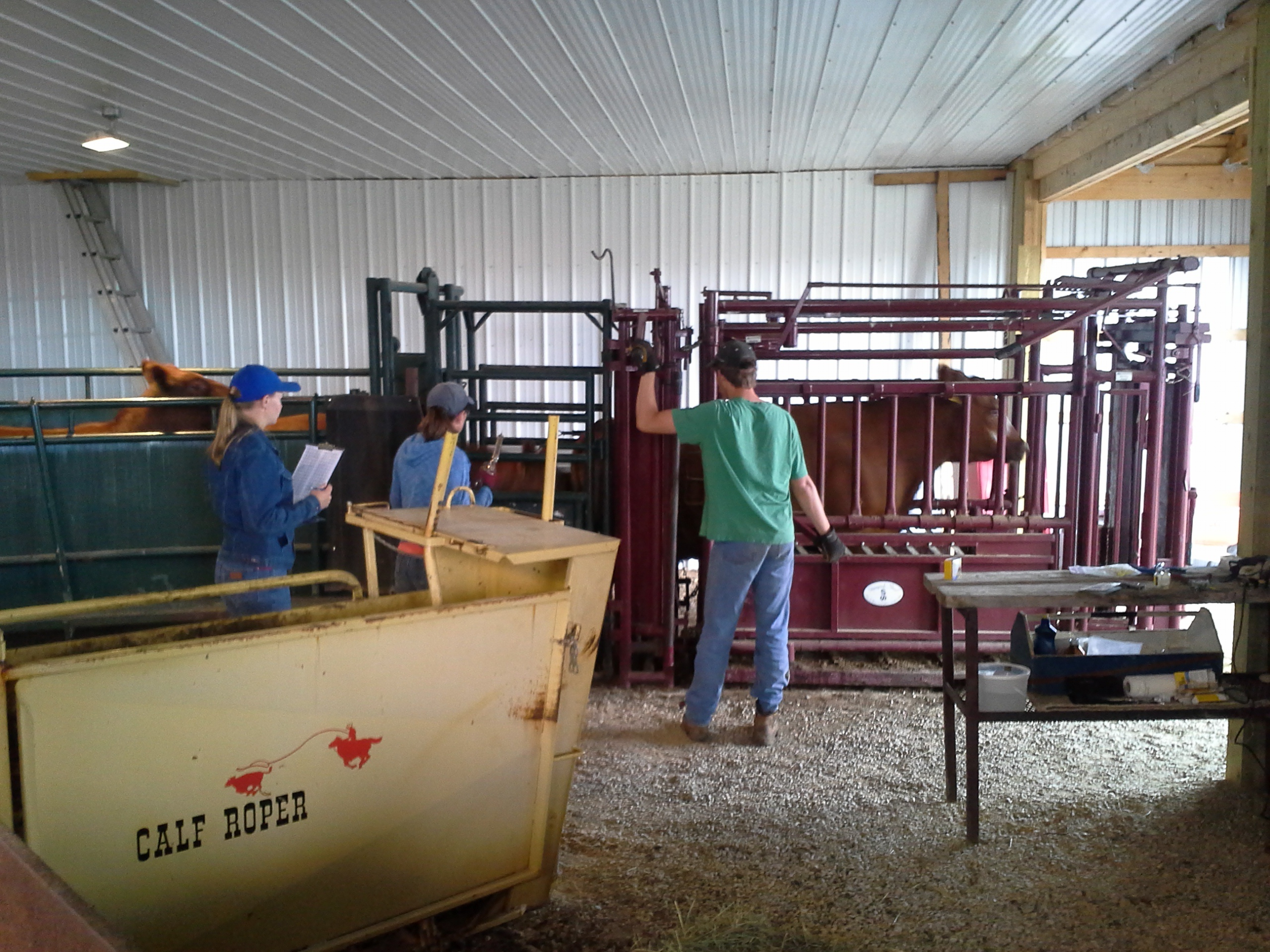
“I use the data from the spreadsheet to calculate a normalized 200-day weaning weight on our calves,” she says. A normalized weight is adjusted for calving dates and steers versus heifers. Cows that produced calves with the lowest performance are identified for culling.
The weaning weights of calves are used to sort calves into the backgrounding program for the winter. Everything is weighed and sorted again, usually in mid-January. Heavier calves might be put on a higher ration to get them to market weight sooner, while lighter calves might be put on a lower ration, and then put out to grass in the springs. It depends on available feed and grass.
McNabb also monitored herd reproductive performance over a few years after they switched to bale and swath grazing in winter. Again, no significant difference in herd conception rates, which told her cattle still maintained a good plane of nutrition even on swath and bale grazing.
Maintaining proper records is essential as they participate in major industry quality assurance and marketing programs such as BIXS, McDonald’s Canada Verified Sustainable Beef Pilot Project and Verified Beef Production Plus (VBP+).
She says maintaining the records takes a bit of time. She usually updates computer records first thing in the morning over the first cup of coffee. “I don’t mind it because I am interested in it,” she says.
tyler fulton
birtle, mb
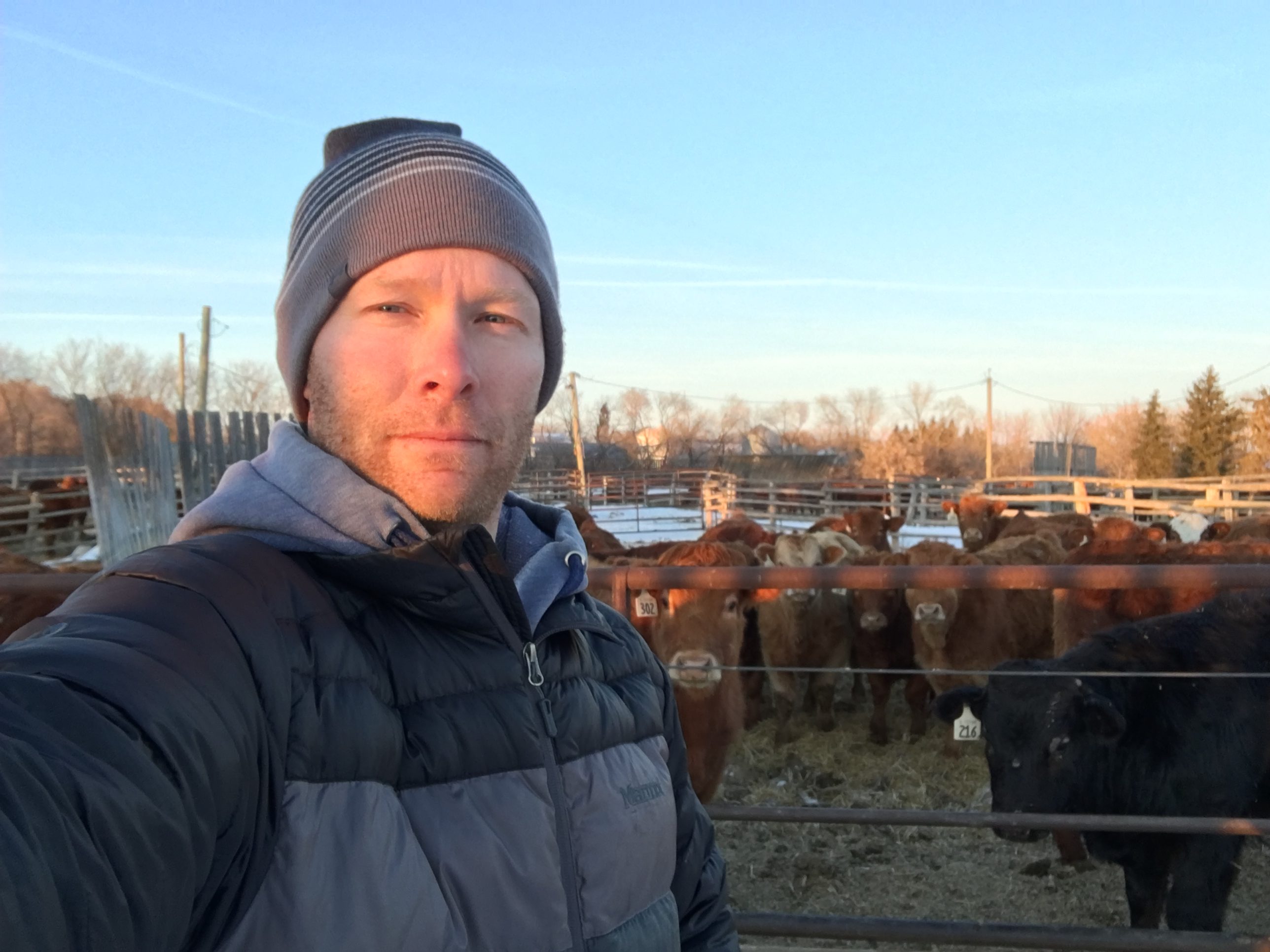
Herd selection and providing an edge into premium marketing programs are the two of the key benefits Tyler Fulton derives from a comprehensive herd record keeping system on his southwest Manitoba farm.
Records maintained on customized Excel program spreadsheets help him select cattle for optimum performance while the collective value of the record keeping system helps him access premium beef markets.
“It is sort of a split between the two,” says Fulton, who along with family members runs a 550 head Beefbooster herd near Birtle, just east of the Saskatchewan border. “One of the main drivers of keeping proper records is to help us make informed decisions about culling and selecting animals for replacement. Another main driver is to provide buyers with the confidence in how our cattle are raised so we can access higher value hormone- and antibiotic-free markets.”
Fulton says he is proud of the record keeping system they’ve developed, although one of the downsides is a cumbersome information transfer from the field to the computer.
Particularly at those peak times of the year — calving and weaning — when he is collecting lots of information, he makes notes in a calving book later to be input into the spreadsheet on the computer.
“Excel isn’t user friendly on a smartphone so I am limited as to what I can input directly,” he says. “So at those busy times I write the information down and transfer it to the computer every night to keep records up to date.” While he has looked at some of the commercially available record keeping systems, he is waiting for an easy-to-use phone app that will allow him to input information directly to software.
As he is looking for a system with more streamlined information transfer, the effort of maintaining records is worth it. With the cowherd at calving, Fulton is collecting key information on the cow — calving difficulty if any, temperament, and he also scores each animal at the time with an assessment of teats, udder and feet condition. That calving-time assessment counts 50 to 70 per cent toward her culling score. From calves he records information such as date of birth, sex, polled or horned and birthweight.
The next main volume of herd information is collected at weaning. All fall calves are weighed and sorted by weight and age into different groups for backgrounding. Some heifers will be kept for replacements in the Fulton herd, some may be selected to be sold as replacement heifers and the rest will continue into the beef market.
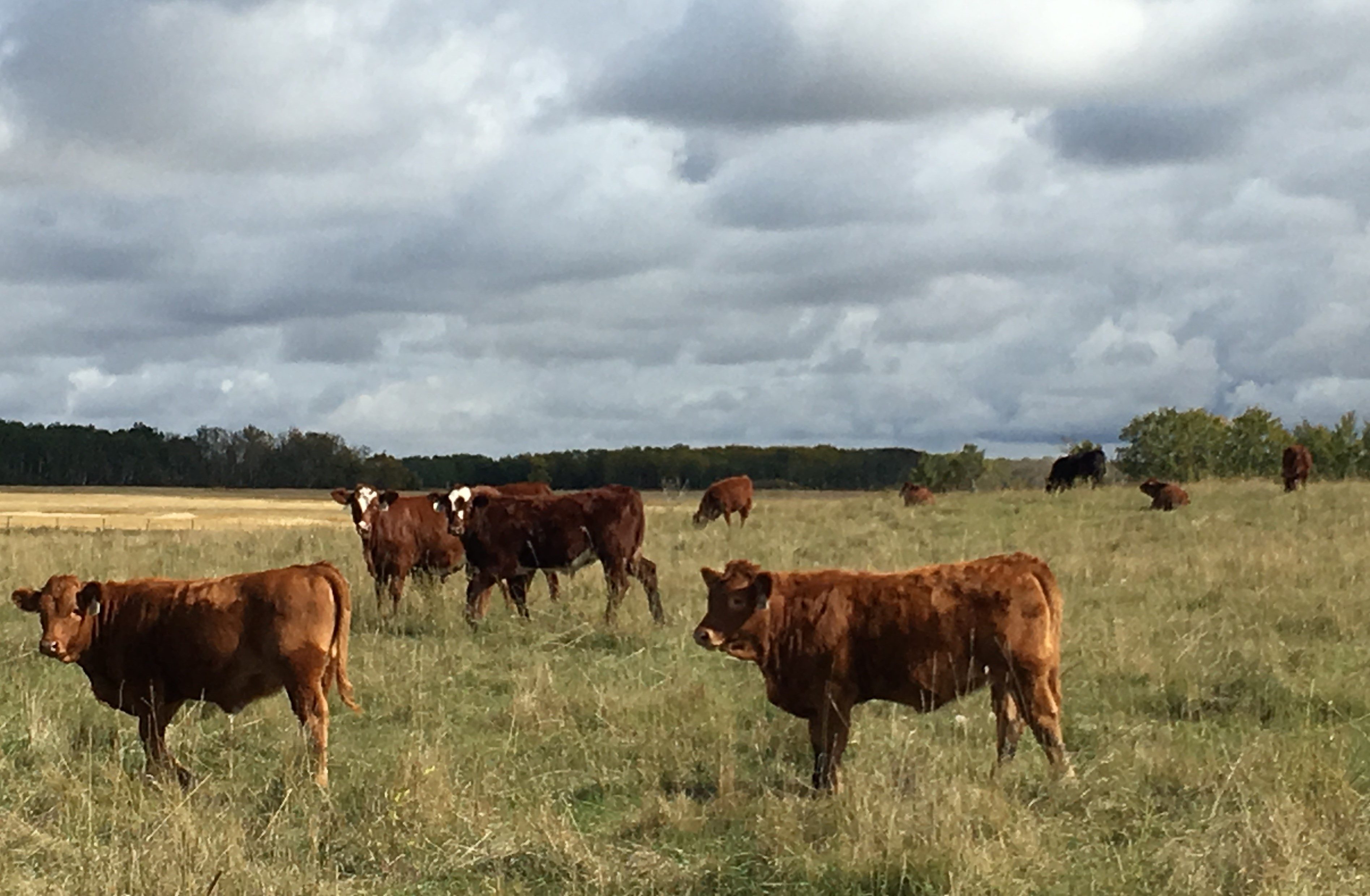
The final major information collecting point is in February and March when backgrounded animals are again sorted and weighed for marketing at about 750 pounds. Steers and heifers are sorted either to be shipped, held on feed for a while longer, or perhaps held to be put out later on grass.
Calf weights from birth to weaning and again from weaning to February/March are recorded and later analyzed for overall rates of gain. “The primary figure we look at is the rate of gain from birth to weaning,” says Fulton.” We are looking at the gain of pounds of beef per animal up to weaning.” That figure reflects on the performance of the breeding program. Females that consistently produce high performing calves and don’t have any serious negative ratings at calving stay in the herd. Poorer performers are culled.
The spreadsheet, which can also accommodate some key beef enterprise input costs, can also generate aggregate cost of production figures for the herd.
Fulton says all the detailed production information contained in the spreadsheet along with participation in programs such as VBP+ are key to marketing. “We are targeting the highest grossing price for calves by supplying specialty markets,” he says. “Those records that help demonstrate our production practices provide buyers with confidence that we raise hormone and antibiotic-free cattle. It provides access to premium price programs.”
tom teichroeb
langruth, mb
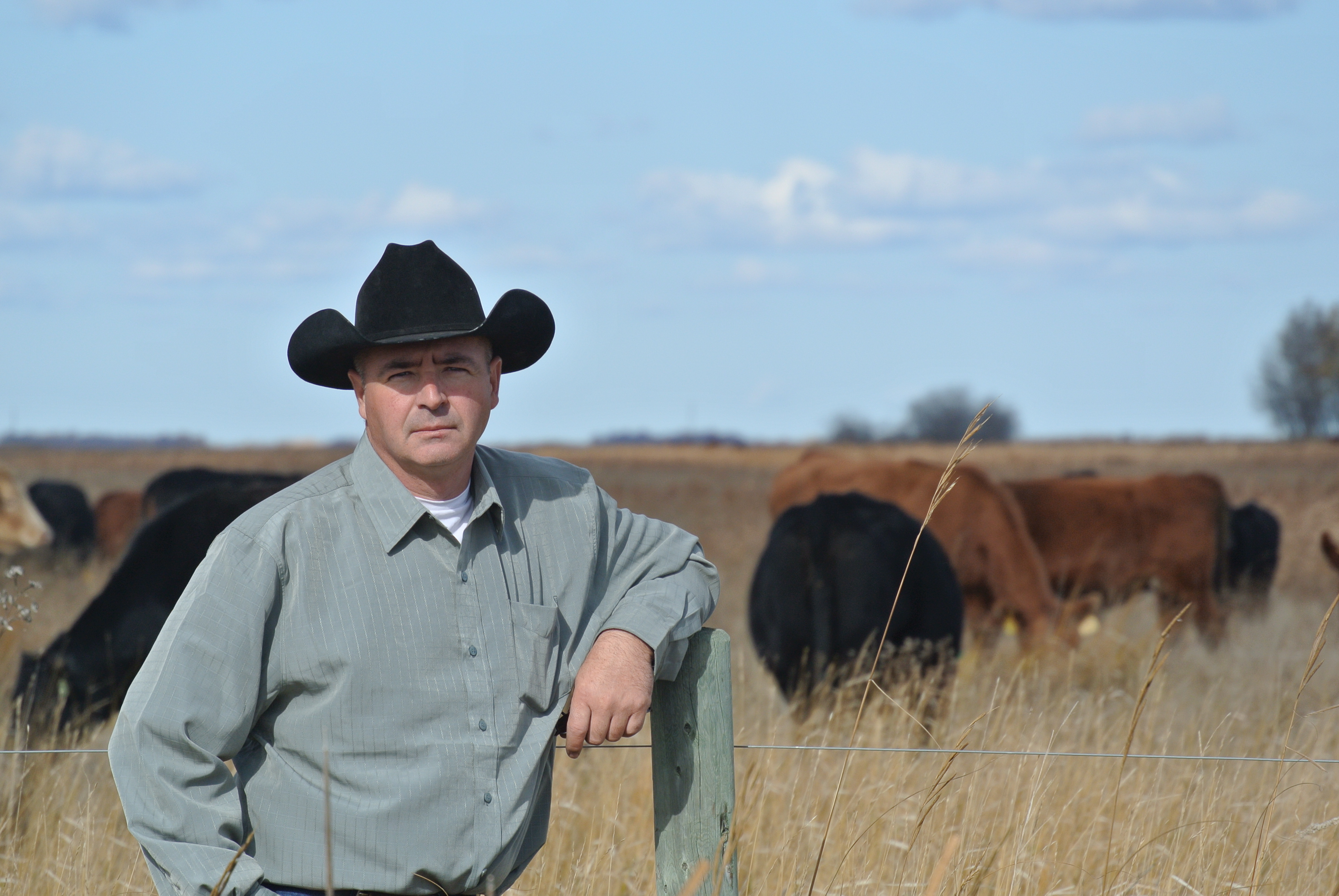
Tom Teichroeb says all the effort he invests in keeping proper production records for his south-central Manitoba beef herd and being involved with industry programs such as Verified Beef Production Plus, pays a very important dividend — it allows him to stay in business, keep doing what he’s doing.
It’s not the only reason. Obviously he wants his Langruth area farm on the west side of Lake Manitoba to be efficient and profitable. “But when people ask me what we get out of keeping records and participating in other programs it is a very simple answer,” he says. “We continue to have a licence to operate. I believe today, for a number of reasons, it is so very important to have your production information documented and to be able to demonstrate we are doing the best job possible. It is important to provide that transparency. My records on how we produce cattle, and on the farming operation itself, are open to anyone who wants to have a look. I am proud of what I am doing here and glad to show everyone that we are doing a good job.”
Teichroeb, who runs a commercial black Angus/Simmental cross herd, has been maintaining very thorough production records on a custom-built Excel program spreadsheet for a number of years. It starts with very complete cattle identification information for cows, calves and bulls. He records not only the CCIA I.D. number, but also each animal is tagged with numbered steel ear tag, as well as a dangle tag. And everything is also branded.
“Again I believe for our own benefit but for the industry as well it is important to have a very solid tracking and traceability system in place,” he says. “We know for certain who every animal is on our farm.”
Seasonal data collected includes individual calving dates, calf sex, and estimated birthweights (backed by historical records of actual calf weights).
The reports also show cowherd performance at calving for the moderate sized (1,300 to 1,350 pound) animals. Calving ease along with any physical traits for each female is noted. As part of the Verified Beef Production Plus requirements they also maintain very detailed medical records — all treatments, withdrawal dates, and product expiry dates are recorded.
All calves are weighed at weaning before going into a backgrounding program. The farm scale is equipped with technology that collects ear tag identification numbers, and weights of each animal, which is easily transferred and uploaded to the office computer.
“As we collect all this information our goal is to maintain and show complete tracking and traceability of our cattle and also to demonstrate an openness to all buyers and markets that this is what we have and this is how it was produced,” says Teichroeb.
The seasonal performance information for each animal is analyzed to make management decisions on culling the herd. “If we have two calves born on April 20, for example, and one weans 650 pounds and the other is 150 pounds lighter there better be a darn good reason or otherwise the mother of that calf is gone. So we can use the data we have collected, plus historical information for each animal in the herd, to sort the top performing animals. While the information has other benefits we do have to maintain productivity and profitability.”
Teichroeb says that accurate animal identification records as well as performance data may now have the potential to add value for fats marketed through the BIXS network. This will hold true as long as everyone in the chain, starting with the primary producer, feedlot and including the packer, has VBP+ status. Ultimately, all the records and shared information provided by BIXS will potentially qualify the primary producer for a premium for those VBP+ certified animals.
“Maintaining proper and thorough production records benefits not only the individual producer but the industry as a whole,” says Teichroeb. “Once you get your main database established, maintaining records is not a big job. We add updated information as it comes along but it only takes a few minutes at a time. I don’t consider it much extra work for what we get in return.”
Read part one, “Making farm decisions easier“.
Click here to subscribe to the BCRC Blog and receive email notifications when new content is posted.
The sharing or reprinting of BCRC Blog articles is welcome and encouraged. Please provide acknowledgement to the Beef Cattle Research Council, list the website address, www.BeefResearch.ca, and let us know you chose to share the article by emailing us at info@beefresearch.ca.
We welcome your questions, comments and suggestions. Contact us directly or generate public discussion by posting your thoughts below.
